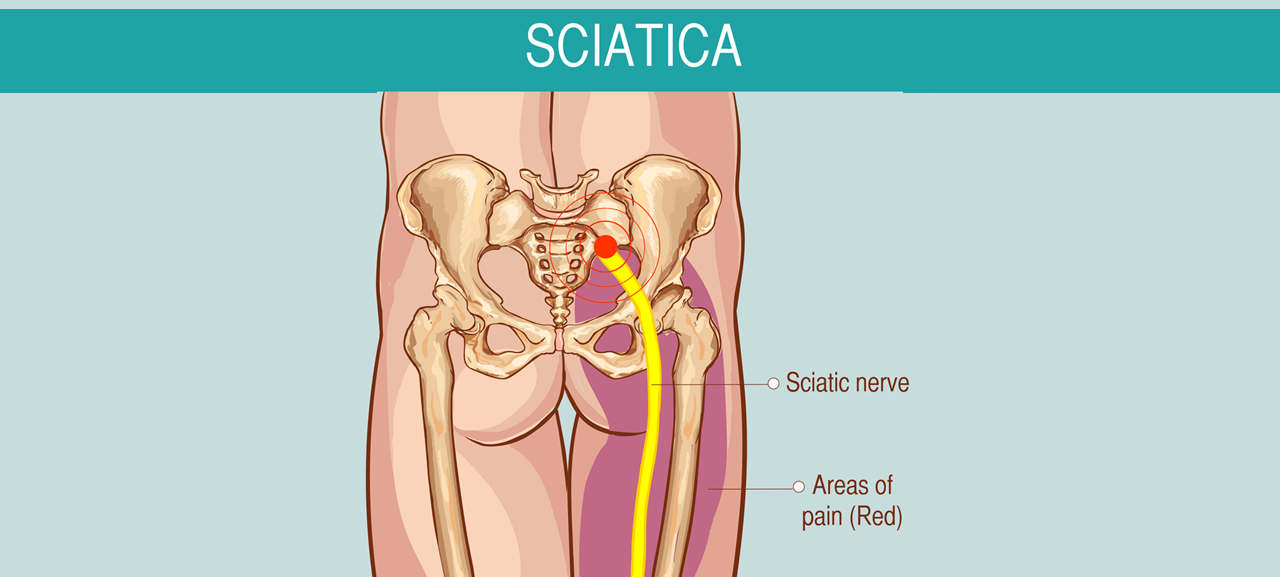
If you or someone you know has had sciatica, you know that the pain typically radiates from your lower back down the back of the leg, usually on one side of the body. Sciatica can be a dull ache, or it can be sharp, excruciating pain that flares up when you cough or sneeze, almost like an electric shock. Sciatica can also cause numbness, tingling and muscle weakness in different areas between your lower back and toes.
But what causes sciatica, and why do you feel pain in those specific areas of the body?
It All Starts with the Sciatic Nerve
The sciatic nerve is the longest and widest nerve in the body. It extends from the lower end of the spinal cord in the lower back, down the hips, rump and legs, and into the feet. When the sciatic nerve in the lower back area becomes compressed or pinched, it can cause irritation and inflammation in the nerve root. This can cause pain up and down the sciatic nerve.
Herniated Discs Are the Top Cause of Sciatica – But Not the Only Cause
The most common cause of the nerve compression and irritation that lead to sciatica is a herniated or bulging disc. This happens when a disc in the lower back sticks out of the vertebrae and puts pressure on the nerve root at the base of the spine.
But sometimes you have to go further to identify the root cause of a condition. For example, if a herniated disc caused your sciatica, what caused the herniated disc?
Injuries, accidents and other trauma can damage discs. Gradual wear and tear as you age can also cause a herniated disc. Obesity and long hours in front of a computer can put more pressure on the spine. Physically demanding jobs and activities with repetitive movements can lead to overuse injuries. While some injuries are impossible to prevent, the lifestyle choices we make can also lead to sciatica.
Other causes of sciatica include:
Other factors that can aggravate or increase the risk of sciatica are obesity, lack of exercise, high heels and poorly fitting shoes, an inflammatory diet, diabetes, poor posture, and poor body mechanics. Again, many of these are lifestyle choices that can be corrected – some more easily than others.
Thousands of cases of sciatica have been treated successfully at my offices over the past 25 years. At Natural Healthcare Center, we know what techniques are most effective, and surgery is only recommended when there are no other options.
If you feel pain shooting down your leg, or you notice pins and needles or numbness between your lower back and toes, over-the-counter pain relievers and prescription medication only mask the pain. They won’t solve the problem. Schedule an appointment so we can get to the root cause of the problem and develop a personalized treatment plan.